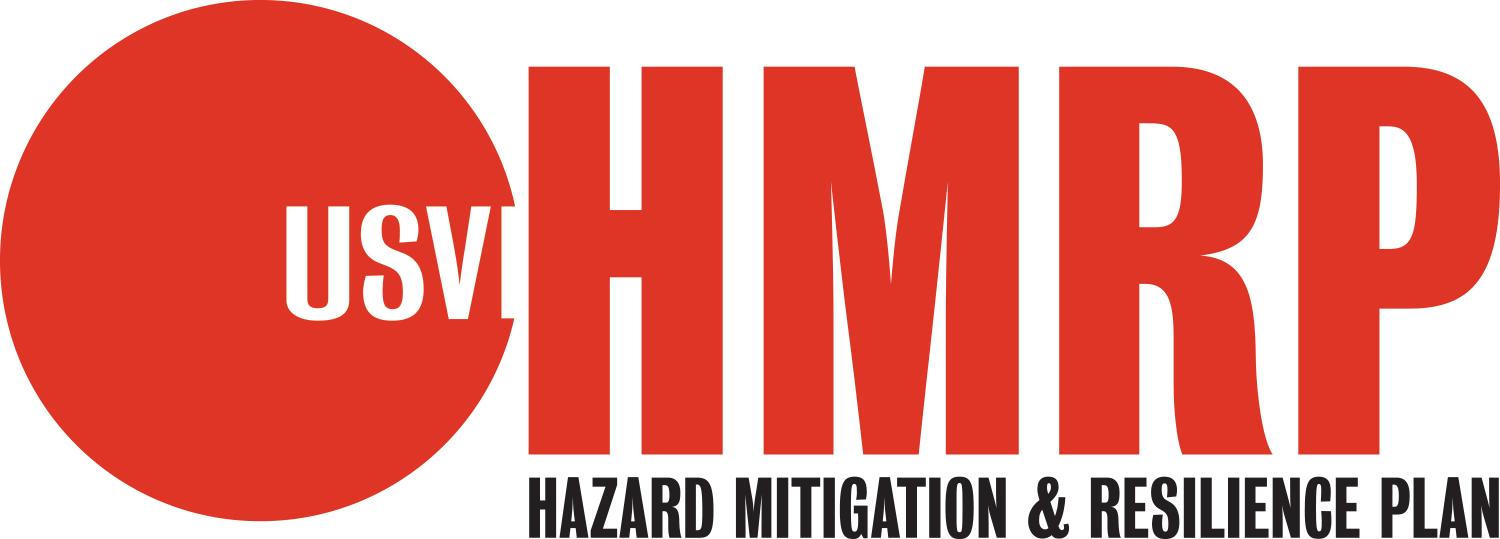The Planning Process
The Planning Process
Dr. Greg Guannel meets with community members and stakeholders who gathered to learn more about the Hazard Mitigation and Resilience Plan.
How The Plan Will Be Created
The process of creating the Hazard Mitigation Plan is being led by UVI, in close coordination with VITEMA. The project team is guided by a Steering Committee. Input from stakeholders is facilitated by sector-based working groups and through public workshops.
Initial Meeting
The initial planning meeting took place at VITEMA's Emergency Operations Centers on St. Thomas and St. Croix in February 2018. The goals of this meeting included a review and acceptance of the project objectives, workplan and schedule. Additionally the meeting established communication protocols, reporting procedures and payment procedures for the project. All parties (UVI, FEAM and VITEMA) saw the need for UVI to have direct communication with Territorial agencies, with VITEMA’s support with facilitating the logistics and organization for these meetings.
Coordination with VITEMA
UVI is working closely with VITEMA as the Territory's Hazard Mitigation Plan is updated. While UVI planning efforts are more comprehensive and wide ranging, UVI understands the importance of VITEMA's Pre-Disaster Mitigation (PDM) planning effort, and as such, works closely with, and to the extent possible participates in, the VITEMA PDM planning effort. To reduce duplicative actions and help streamline UVl's overall planning efforts, it is important for UVI to follow and understand PDM outputs, particularly the results of hazard mapping and risk assessments, and the mitigation strategies that will be developed.
Stakeholder Collaboration and Coordination
The quality, effectiveness, and implementation of mitigation strategies depend on their relevance and acceptance by USVI constituents. Throughout the process, UVI relies on a Steering Committee to guide its efforts, and gathers input and receives feedback from government agencies, communities and other stakeholders by relying extensively on sector-based working groups and public workshops.
Steering Committee
UVI established and leads a HMRP Steering Committee, which generated a vision statement, developed strategies and set goals. The Steering Committee met regularly during the development of this planning effort. The Committee is composed of a small group of key stakeholders, chosen in close consultation with VITEMA.
Sector-Based Working Groups
To maximize input and feedback from a wide-reaching group of stakeholders, UVI develop sector-based working groups, which is consistent with the National Disaster Recovery Framework. Representation includes emergency managers, long-term recovery groups, territorial government, and private and non-profit sectors.
Citizen Advisory Groups
In the wake of Hurricanes Irma and Maria, Long Term Recovery Groups (LTRG) were formed on each island. Each LTRG is comprised of multiple stakeholders within the community, including: non-profits, faith-based organizations, foundations, and others. UVI has engaged with the LTRGs to act as the citizen advisory groups for each island and will leverage efforts of the groups to inform the entire planning process. LTRGs coordinate with Steering committee members to provide input and guidance on all aspects of the planning process; engage the public, host community engagement meetings during key steps in the planning process and promote and educate citizens about the plan. UVI provides support and technical assistance to the LTRG in all aspects of the public engagement, and a UVI student serves as a liaison between the LTRGs and the Steering Committee.
Workshops and Engagement
As highlighted above, stakeholder outreach and communication is continuous throughout the entire planning process and uses as many appropriate techniques as possible to educate and garner input from key stakeholders and the public.
UVI views civic engagement as an important avenue to help mainstream hazard mitigation, sustainability and resiliency themes in the Territory.
Strategic Planning Workshops
UVI guides the development of The Plan through its Steering Committee. While the Steering Committee is regularly engaged, UVI is using a series of strategic planning workshops to engage this committee, along with a select group of subject matter experts, in the development of specific plans or plan elements. This includes capability assessments, risk and vulnerability assessments, sustainability planning, and the integration of hazard mitigation, resiliency and sustainability into wider planning and development efforts.
Public Workshops
UVI has, and continues to, organize a series of public workshops on each of the major islands (St. Croix, St. Thomas, and St. John) as The Plan is being developed. Public workshops are held to inform government agencies and the public about the plan development process and to present findings and gather feedback. Public workshops are a venue to present data in an easy-to-understand format in order to help government agencies and the public conceptualize and understand hazards and risk, which are important for the formulation of mitigation strategies. Establishing a schedule of workshops early in the planning process helped maintain momentum and engagement during this multi-year planning effort, although COVID-19 restrictions have moved meetings and workshops into the virtual arena. UVI views civic engagement as an important avenue to help mainstream hazard mitigation, sustainability and resiliency themes in the Territory.
Media Campaign
In addition to public workshops, UVI has developed communication strategies and media campaigns to promote and create awareness around its planning efforts. The campaigns focus on increasing awareness of natural hazards types and their potential impacts on the Territory, and on actions that can be taken to reduce these impacts. The campaign also explains and promotes key strategies for building community resilience and incorporating sustainability into wider development processes. Communication channels that continue to be utilized as part of the campaign include community events, radio, television, social media and other web-based activities, and they leverage UVI outreach mechanisms and media outlets and/or events.

